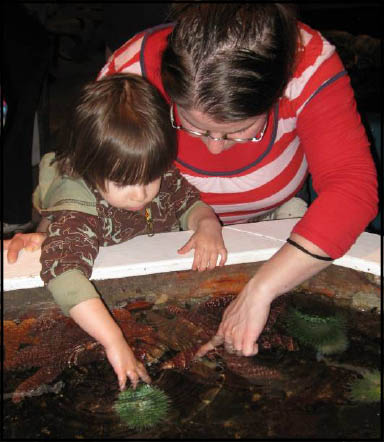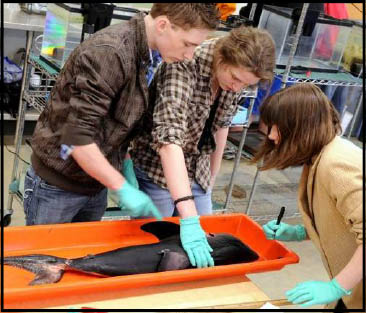|
About the Seaside Aquarium
When the aquarium was founded in 1937, the goal was
mostly to entertain the public. The dark interior was meant
to create the feeling of swimming through an ocean cave
at a time when respiration-aided diving was virtually unknown.
In the past several years, the focus has shifted to include education
and community involvement as well as entertainment. We
have reached beyond the walls of the actual building to
participate in local events and projects geared toward a better
understanding and appreciation of the North Coast marine
environment.
In 1995, we became leaders in the regional Marine Mammal
Stranding Network. In the next few years we added an
Interpretive Center and helped start Seaside’s Watershed Estuary
Beach Discovery Program. We have partnered with local
businesses, non-profit organizations, and the City of Seaside to inform both visitors and local communities about
beach safety, tides, different coastal habitats, and the animals who live there.
|

|
|

Aquarium, Local Students Participate in Ongoing Research
Three summers ago when a number of salmon sharks washed up on local
beaches, Seaside Aquarium staff collected and froze them to provide to local
science educators for dissections. Two researchers, one from Stanford University,
and one from the Alaska Fish and Wildlife Service, learned about these sharks
and contacted the Aquarium, requesting samples to help further their studies on
salmon sharks. When school resumed, the Marine Biology class at Astoria High
School dissected the sharks, taking measurements and samples that were sent to
the researchers.
For the past three years, the Aquarium has collected the animals and frozen
them for future dissections, the AHS Marine Biology class has taken samples,
and the Aquarium has sent these samples to researchers. Students measure

length and girth of the animals and take vertebrae,
liver, kidney, red and white muscle tissue samples.
The vertebrae are sent to Alaska, where a researcher
is studying why the salmon sharks who are washing

up all appear to be approximately the same age and
size. He thinks they have died of encephalitis and
wants to know more about how the encephalitis
works in the sharks’ bodies. The organ and tissue
samples are sent to Stanford where a researcher
is studying how salmon sharks are able to raise
their body temperatures above the temperature of the surrounding water. Although
all sharks are able to do this, salmon sharks can raise their temperatures high enough that
they can live as far north as the Bering Sea. This year AHS students worked in groups of two
and three to dissect six animals for study.
|


